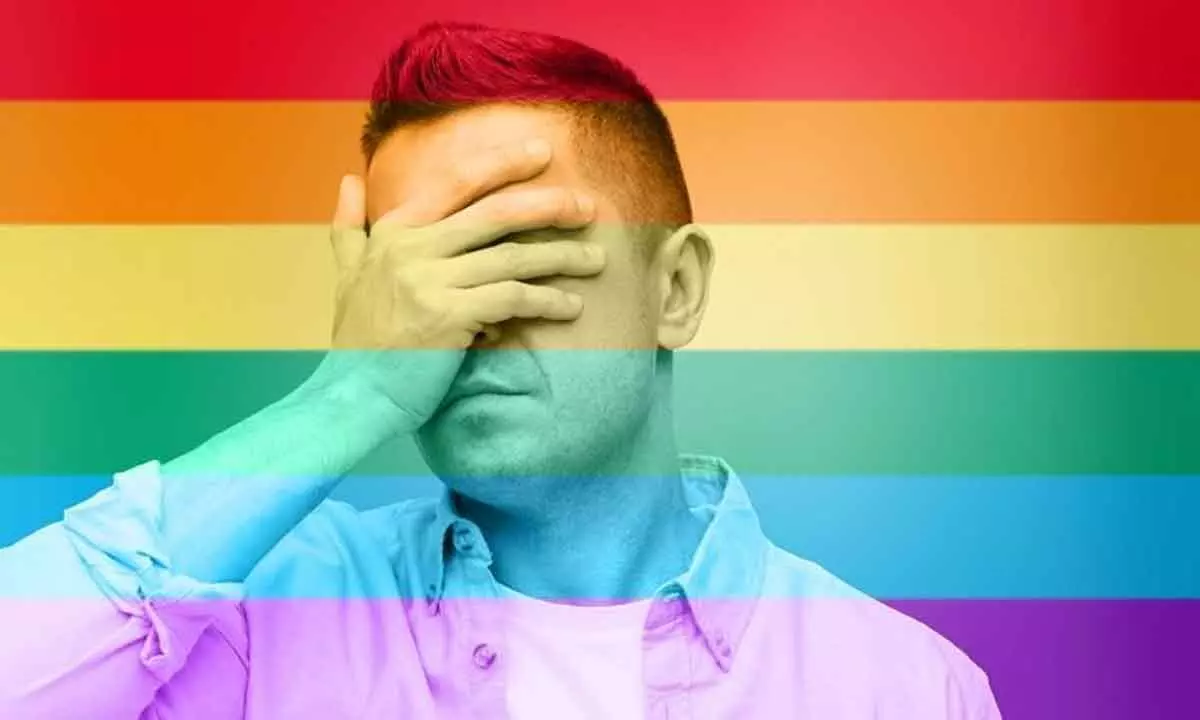Live
- Job scam: No High Court bail for Partha
- Joint teams from AP, TG destroy illicit liquor
- Refusing medical aid to sexual, acid attack survivors an offence
- TTD Parakamani Theft Case: Fresh row as board member seeks probe
- People struggling with rising prices: Rahul
- Santa cap on Annamayya statue sparks tension
- Speed up Bhogapuram airport works: CS to officials
- Demand up for Amit Shah’s dismissal
- APSFL sacks 410 staff with immediate effect
- Integrity of poll process eroding
Just In
Does homophobia still exist in India?


Homophobia, the term for prejudice, animosity, or discrimination against people based on their sexual orientation, is still widespread throughout India. Despite advancements in legal recognition and protection of LGBTQ+ rights, cultural opinions towards homosexuality can be complex. Although most educated individuals theoretically support multiple sexual orientations and gender identities, there is a critical need to change the reality
June, Pride Month in India and across the globe, celebrates the rights of those who identify as lesbian, gay, bisexual, or transgender.
There are certain carvings on temples and many stories in ancient India that imply homosexuality has been a part of India for a very long time, but the British imposed Section 377 of the Indian Penal Code (IPC) in 1861, influenced by the 1553 Buggery Act, which prohibited homosexuality. One can say India was a progressive society until the British came.
Homophobia, the term for prejudice, animosity, or discrimination against people based on their sexual orientation, is still widespread throughout India. Despite advancements in legal recognition and protection of LGBTQ+ rights, cultural opinions towards homosexuality can be complex. Although most educated individuals theoretically support multiple sexual orientations and gender identities, there is a critical need to change the reality.
By striking Section 377 of the Indian Penal Code, which made consenting to same-sex intercourse a crime, the Supreme Court of India decriminalised homosexuality in 2018.
Before 2018, homosexual acts were punishable by up to 10 years in jail under the colonial-era law. The historic decision was a big step forward for LGBTQ+ rights in India, but it refused to allow for same-sex marriage. However, it is crucial to highlight that changing laws does not always result in universal acceptance or abolition of Homophobia.
Even though there is no official data on India’s LGBT+ population, the government believes there are 2.5 million gay people.
According to a survey, most LGBT people can only be accepted by their families if they agree to act in a heterosexual manner.
It is also evident on many levels how differently heterosexual and homosexual couples are treated. Depending on factors including geography, religion, level of education, and generational differences, attitudes towards homosexuality can differ in India. There are still incidents of discrimination, social stigma, and violence encountered by the LGBTQ+ community, although some elements of society are becoming more accepting and supportive of LGBTQ+ people.
We got closer to creating a truly inclusive society with each institution or university that decides to participate in LGBT activism. It is essential to remember that cultural attitudes and situations can shift through time and that progress towards more acceptance and understanding is possible.

© 2024 Hyderabad Media House Limited/The Hans India. All rights reserved. Powered by hocalwire.com






